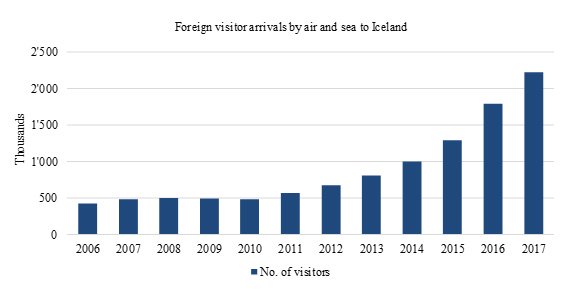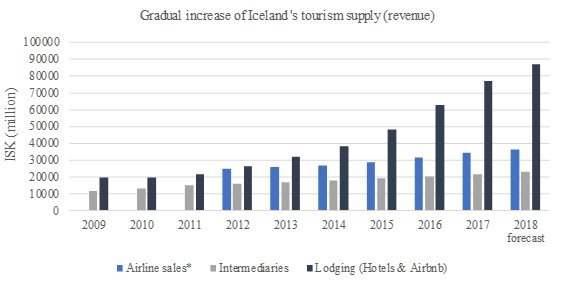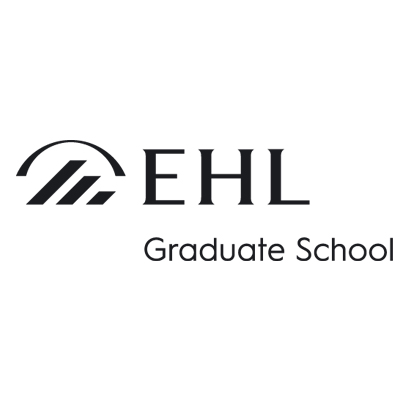In April 2010, Eyjafjallajökull, a volcano in southern Iceland, began spewing several kilometres of volcanic ash into the atmosphere. The cloud of ash forced the greatest airspace closure since World War II, cancelling nearly 100,000 flights and disrupting the travel plans of tourists and business travelers alike throughout northern Europe. What could have been interpreted as a disaster for Iceland’s economy, turned out though to be a blessing in disguise.
The island had traditionally held little appeal to international tourists and most of the country’s GDP came from its fishing industry. Then, in 2008, the financial crisis sent the world’s economy into a tailspin which triggered a series of hardships that threatened to destroy the country’s reputation. The Icelandic Krona depreciated significantly as Icelandic banks were unable to repay their short-term debt, and over the course of a few weeks Iceland garnered more media attention than it had had in the previous two decades.
Criticism in the international media about the country’s financial situation, coupled with a global drop in leisure travel, led to a negative growth rate in foreign visitor arrivals in Iceland in 2009. All hope was not lost, however, and hope came from a most unlikely source: the eruption of Eyjafjallajökull in the spring of 2010.
So how did Iceland turn things around?
The country’s government, still reeling from the financial crisis, chose to bring in UK consulting firm Brooklyn Brothers to help mitigate the impact of the negative coverage.
In their initial analysis, the firm determined that following the eruption, negative sentiment towards the country in key tourist sources went from 19 percent three days after the eruption to 72 percent in just seven days.
In the three weeks after the disaster, tourist numbers fell by 30 percent, continuing into May. Based on this data, the Icelandic government predicted a 22 percent decline in tourist volumes, equating to a shortfall in revenue of £180 million for the economy.
The outlook was bleak but Brooklyn Brothers and the Icelandic government saw an opportunity to turn the tide of sentiment by making use of social media and leveraging the publicity. In order to refocus their efforts the government consolidated The Trade Council of Iceland, Invest in Iceland and the marketing efforts of the Icelandic Tourist Board under one organization: Promote Iceland.
‘Inspired by Iceland’
One major source of hope was the volume of positive reviews from tourists who had visited the country before. The newly-created tourism board estimated that more than 60 percent of tourists who had spent time in Iceland would be happy to return and would recommend it to others.
The key was then to create brand ambassadors for the country.
To this end, a social media campaign named Inspired by Iceland was launched with the strategic intent of depicting the beauty of the country, the friendliness of its people and the fact that it was very much open for business. The volcanic eruption provided the stage, now it was just a matter of re-writing the script.
In collaboration with Brooklyn Brothers, the Icelandic government encouraged the entire population of the island to stop what they were doing for 60 minutes in June 2010 for Iceland Hour and post whatever positive messages, pictures, or videos they wanted about their homeland.
Within one day of launching the campaign, one third of the population of 318,000, including the Prime Minister, had participated. More than one million messages were sent and the Inspired by Iceland promotional video was downloaded over one million times that same day, with tweets reaching more than five million people and the campaign’s Facebook page attracting 45,000 fans. Engagement in terms of sharing and posting activity was twice the average.
The success of the first Iceland Hour then snowballed. Across social and digital media generally, over 2 million stories were seen and sent by fans. Between June and August, live webcam footage of Iceland generated 60 million views. Overall, approximately 80 percent of posts during the campaign showed positive attitudes towards Iceland and negative posts fell from approximately 20 percent at the start of the campaign to a low of five percent mid-campaign.
As a reward for participating in Iceland Hour, and as an incentive to continue posting, the government staged a live open-air concert in July 2010 for anyone involved in the campaign. The concert was also streamed online so that anyone in the world could watch it for free. The concert attracted over 90,000 visits from 52 countries to the Inspired by Iceland website.
The Icelandic Tourist Board noted that positive perceptions of Iceland increased in three of its main tourist markets: the UK, Germany, and Denmark. Shortly following the launch of the campaign, USA Today voted Iceland as a top travel destination for 2011, and Lonely Planet listed Iceland’s Westfjords as one of its ‘Top 10 regions to travel for 2011’. In addition, CNN’s travel website, CNNGO, featured Reykjavik as the top holiday destination for Christmas 2010.
It’s safe to say the campaign did its job in boosting tourism demand.
Brooklyn Brothers reported that between early May and year-end, tourist arrivals beat forecasts by 27 percent. At the peak of the season, in August, tourist numbers were some 43 percent above forecast levels. Overall, 79,252 additional visits were achieved. Given an average spend per head of £1,750, the total revenue generated was £138.7 million. All of this led to one key conclusion: the increase in Icelandic tourism was far greater than the previous decline caused by the natural disaster and greatly exceeded forecasts.

Source: Icelandic Tourist Board, 2018
In contrast, natural disasters in other parts of the world – whether the tsunami which struck Thailand in 2004, Hurricane Katrina in the US in 2005, or the tsunami and nuclear disaster in Japan in 2011 – have significantly hindered tourism demand with repercussions lasting for decades after the event took place.
With greater demand, comes more responsibility
The Inspired by Iceland promotion and other campaigns have been so successful that in 2017 the total number of tourist arrivals outnumbered the population seven to one. To put that into context, the total number of tourists visiting France outnumbered residents by two to one. The increase was so great that more tourists visited Iceland between 2008 and 2016 than had visited in the 60 years preceding that time.
This surge in social media attention also helped Iceland combat previous issues faced by the tourism industry, such as seasonality.
Iceland is in darkness for half the year and its summer temperatures average around 13 degrees centigrade. To tackle this issue, campaigns focused on the beauty of the winter landscape, Christmas packages, and local snow-mobile tours to see the Northern Lights. These have triggered an increase in the number of visitors to Iceland by as much as 30 percent since 2010, making tourism the biggest industry on the island and the single biggest employer.
Many Icelanders have been investing in services and new construction which will increase supply and help the tourism industry keep up with demand. Overall, the Eyjafjallajökull eruption led to a booming economy, which has expanded by 10 percent since its near-bankruptcy.
While tourism demand has increased by 12 percent per year on average over the past 10 years, the relatively slower pace of construction meant that supply took longer to adapt and only showed a growth rate of about five percent per year. Though there has been significant foreign investment in new hotels and infrastructure, the supply of accommodation and tourism outlets has not yet caught up with the increase in tourist arrivals.
Iceland's hotel sector consists mainly of domestic hotel chains and independent hotels. In addition, a few global brands have offered licensing contracts to domestic operators.As of October 2018, Iceland counted 162 hotels, whereof about one third are located in the capital of Reykjavik. Airbnb has helped to close the gap between supply and demand to some extent. However, the government has limited the maximum number of days residents are allowed to rent out their apartments to 90 days and capped the total rental price at ISK 11,110 per night (94 USD). The remaining shortfall in accommodation in general has led to significant upward pressure on room prices.
Adding to that pressure is the increase in inbound flights to Iceland. During 2018, the growth is estimated to be at about five percent. One of the most unexpected benefits of the Eyjafjallajökull eruption was the realization that Iceland’s Keflavik airport is located directly on the flight route from central Europe to California, and is a very convenient stop for many travelers from the US to Europe and vice versa. Once this strategic position became apparent, Iceland decided to position its international airport as an airline hub to feed the country’s tourism further.
In line with the increase in the number of hotels and air connections to Iceland, the number of tour operators grew as well.

Source: Euromonitor International, Travel in Iceland, 2015 and 2018
And the lesson learned? To survive an economic crisis, follow it up with a well-documented natural disaster!
While the volcanic eruption had a positive effect in the years after the incident, the question now is whether this rapid growth in Iceland’s tourism is sustainable. It is interesting to note that the while the government helped boost tourism and the reaction from the locals was hugely positive, there is beginning to be a backlash over rising prices, overtourism, increased house prices, and a worry that the unspoiled natural landscape is being adversely affected.
Iceland’s tourism industry could be reaching its capacity limit for the moment and will likely experience more moderate growth rates. Economic cycles, like clouds of ash, can rise, but they must inevitably come down again.
Simone Eliane Troxler and Sofia Van Holle are Executive MBA students at Ecole hôteliere de Lausanne. Their project was supervised by Dr. Yong Chen, an assistant professor who teaches marketing, and economics of tourism and hospitality at EHL.
References
- Brooklyn Brothers Agency, How Social Media Rescued Icelandic Tourism After The Volcanic Eruption, published 2014, https://www.mrs.org.uk/pdf/iceland.pdf.
- The Icelandic Tourist Board, Foreign Visitors To Iceland 1949-2017, published in 2018, https://www.ferdamalastofa.is/en/recearch-and-statistics/numbers-of-foreign-visitors.
- Euromonitor International, Travel in Iceland, 2015, pages 15-19, and 2018, pages 15-21.





